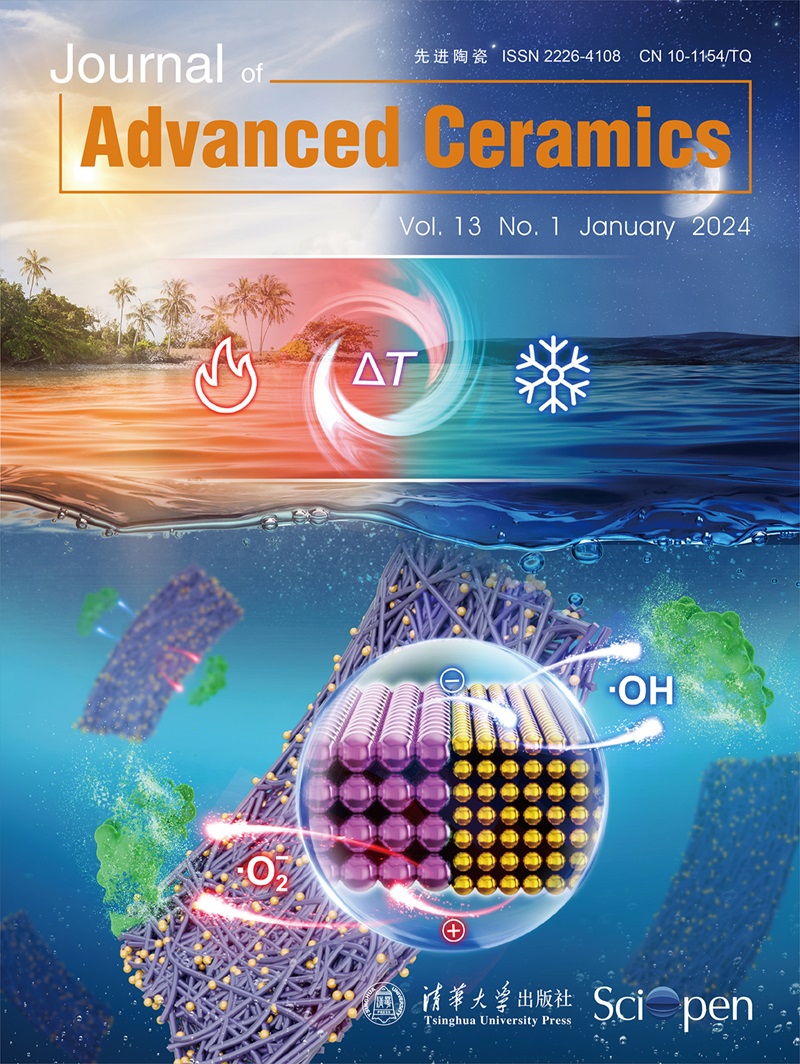二硼化锆的各向异性热膨胀:能量色散x射线衍射研究
IF 16.6
1区 材料科学
Q1 MATERIALS SCIENCE, CERAMICS
引用次数: 11
摘要
二硼化锆(ZrB2)由于其热学和电学性能是一种有吸引力的材料。近年来,ZrB2作为蓝宝石的优良替代品被研究用于氮化镓器件的衬底。与蓝宝石一样,ZrB2具有各向异性的六边形结构,这决定了它的方向依赖性。然而,ZrB2的各向异性行为尚不清楚。本文采用能量色散同步加速器x射线衍射测量了ZrB2多晶粉末在300 ~ 1150 K范围内的热膨胀。利用伪voigt峰轮廓拟合9个Bragg反射,并利用非线性最小二乘近似计算晶格参数。温度相关的瞬时热膨胀系数在每个-轴和-轴方向上确定,并由以下方程描述:= (本文章由计算机程序翻译,如有差异,请以英文原文为准。
Anisotropic Thermal Expansion of Zirconium Diboride: An Energy-Dispersive X-Ray Diffraction Study
Zirconium diboride (ZrB2) is an attractive material due to its thermal and electrical properties. In recent years, ZrB2 has been investigated as a superior replacement for sapphire when used as a substrate for gallium nitride devices. Like sapphire, ZrB2 has an anisotropic hexagonal structure which defines its directionally dependent properties. However, the anisotropic behavior of ZrB2 is not well understood. In this paper, we use energy-dispersive synchrotron X-ray diffraction to measure the thermal expansion of polycrystalline ZrB2 powder from 300 to 1150 K. Nine Bragg reflections are fit using Pseudo-Voigt peak profiles and used to compute the and lattice parameters using a nonlinear least-squares approximation. The temperature-dependent instantaneous thermal expansion coefficients are determined for each -axis and -axis direction and are described by the following equations: = (
求助全文
通过发布文献求助,成功后即可免费获取论文全文。
去求助
来源期刊

Journal of Advanced Ceramics
MATERIALS SCIENCE, CERAMICS-
CiteScore
21.00
自引率
10.70%
发文量
290
审稿时长
14 days
期刊介绍:
Journal of Advanced Ceramics is a single-blind peer-reviewed, open access international journal published on behalf of the State Key Laboratory of New Ceramics and Fine Processing (Tsinghua University, China) and the Advanced Ceramics Division of the Chinese Ceramic Society.
Journal of Advanced Ceramics provides a forum for publishing original research papers, rapid communications, and commissioned reviews relating to advanced ceramic materials in the forms of particulates, dense or porous bodies, thin/thick films or coatings and laminated, graded and composite structures.
 求助内容:
求助内容: 应助结果提醒方式:
应助结果提醒方式:


